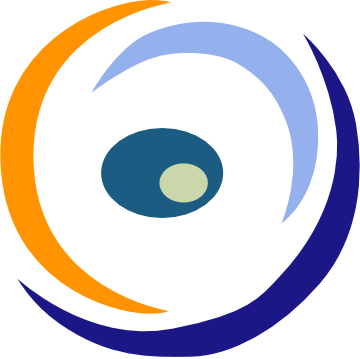In the evolving landscape of healthcare, optometrists are increasingly turning to innovative Software as a Service (SaaS) solutions to enhance patient care and optimize practice management. These technologies offer customizable features, integrate seamlessly with telehealth services, and provide powerful tools for data analysis and patient engagement. As the industry continues to adapt to new challenges and opportunities, SaaS stands at the forefront of modernizing ophthalmology practices.
Key Takeaways
- Specialized EMR systems with customizable features can significantly enhance patient care in ophthalmology practices.
- Advanced SaaS solutions streamline practice management by automating administrative tasks and integrating financial systems.
- Telemedicine has become an essential component of patient services, improving access and satisfaction while differentiating practices.
- Integrating CRM with EMR systems fosters improved patient engagement through personalized interactions and efficient care management.
- Future-proofing ophthalmology practices involves adapting to industry changes with flexible SaaS solutions that ensure security and support telemedicine.
Enhancing Patient Care with Specialized EMR Systems

Customizable Ophthalmology EMR Features
The advent of customizable EMR systems has been a game-changer for ophthalmology practices. These systems offer a range of features tailored to the unique needs of eye care professionals, enabling them to enhance patient care and streamline operations. For instance, revolutionary eyeglasses fitting software with AI, systematic trials, and performance metrics enhance optometry. Integration in prescription eyewear offers personalized solutions and revolutionizes ophthalmology, providing clear vision and telemedicine consultations.
Key features of these EMR systems include customizable templates for patient encounters, integrated imaging and diagnostic tools, and the ability to track patient outcomes over time. This flexibility ensures that ophthalmologists can focus on patient care rather than paperwork.
By leveraging these advanced EMR features, practices can not only improve the efficiency of their clinical workflows but also provide a more personalized and effective patient experience.
Furthermore, the integration of these systems with other practice management software allows for seamless data exchange, which is crucial for maintaining accurate and up-to-date patient records. This integration is essential for automating administrative tasks and ensuring that the practice runs smoothly.
Integrating Telehealth for Comprehensive Service
The integration of telehealth into optometry practices is a game-changer, offering a comprehensive service that extends beyond traditional care. By leveraging digital optometry tools, practices can enhance the patient experience and improve diagnostic accuracy. Telehealth solutions, such as video teleconferencing and AI integration, are revolutionizing eye care delivery, leading to better outcomes and increased accessibility.
The seamless integration of telehealth with existing EMR systems is crucial for a streamlined workflow. It allows for efficient scheduling, reducing wait times and improving patient satisfaction. This integration also facilitates secure access to HIPAA-compliant patient data, ensuring that patient privacy is maintained while delivering high-quality care.
- Optimize Schedules: Reduce patient wait times during in-person visits.
- Enhance Productivity: Improve practice operations and staff efficiency.
- Improve Patient Satisfaction: Offer convenient access to care and foster better patient-practice relationships.
Telehealth is not just a tool for patient care; it is an under-used asset that can transform the operational aspects of a practice. As the healthcare industry continues to evolve, the adoption of telehealth will become increasingly important for optometrists looking to stay ahead in a competitive market.
Streamlining Clinical Workflows with Cloud-Based Solutions
The transition to cloud-based solutions for clinical workflows represents a significant leap forward in practice efficiency. Cloud technology enables real-time updates and access to patient records, ensuring that the most current information is always at the fingertips of healthcare providers. This immediacy not only improves the quality of patient care but also enhances the collaboration among staff.
- Centralized Data Storage: All patient information is stored in one secure location, accessible from any device with internet connectivity.
- Automated Updates: Patient records are updated in real time, reducing the risk of errors and outdated information.
- Scalability: Practices can easily scale their operations up or down without significant investments in IT infrastructure.
The integration of cloud-based solutions into clinical workflows reduces the administrative burden on staff, allowing them to focus more on patient care and less on paperwork. By streamlining processes, practices can see a reduction in wait times and an improvement in overall patient satisfaction.
The benefits of adopting cloud-based solutions are clear, with practices experiencing enhanced efficiency and improved patient outcomes. As the healthcare industry continues to evolve, those who embrace these innovative technologies will be well-positioned to thrive in an increasingly competitive environment.
Optimizing Practice Management through Advanced Software

Automating Administrative Tasks for Efficiency
In the realm of optometry practice management, automating administrative tasks is a game-changer for efficiency. By leveraging advanced software solutions, practices can streamline operations, reduce manual errors, and free up valuable time for patient care. These solutions encompass a range of functionalities:
- Employee scheduling
- Time clock and attendance tracking
- Task management and checklists
- Compliance calendar and risk management
- Workflow automation and real-time analytics
Automation not only simplifies administrative processes but also provides a structured approach to managing daily tasks, ensuring nothing falls through the cracks.
The impact of automation is evident in the reduction of time spent on routine tasks. For instance, digital safety forms and document management systems eliminate the need for physical paperwork, while online proofing and approval workflows expedite document handling. The table below illustrates the potential time savings in various administrative areas:
Adopting such systems not only enhances operational efficiency but also contributes to a more focused and patient-centric practice environment.
Financial Management and Billing System Integration
Integrating financial management and billing systems within optometry practices is a critical step towards operational excellence. Optometrists can now leverage sophisticated SaaS solutions to streamline their billing processes, ensuring accuracy and efficiency. These systems often include features such as automated claim submissions, real-time eligibility checks, and comprehensive reporting tools.
- Automated claim submissions reduce manual errors and save time.
- Real-time eligibility checks prevent claim denials and delays.
- Comprehensive reporting tools provide insights into financial health.
By adopting integrated systems, optometrists can focus more on patient care rather than administrative tasks. Moreover, the integration of platforms like PupilFit AI can enhance the overall patient experience by offering precise measurements and seamless system compatibility.
The seamless integration of financial management systems with clinical workflows not only optimizes billing cycles but also contributes to a more robust revenue cycle management.
Leveraging Data Analytics for Practice Growth
The strategic use of data analytics in optometry practices can be a game-changer for growth and development. By analyzing patient demographics, appointment trends, and treatment outcomes, practices can uncover valuable insights to drive informed decision-making. Optimizing marketing efforts and tailoring services to meet patient needs becomes more effective with data-driven strategies.
- Identify high-demand services and peak appointment times
- Track patient outcomes to improve care quality
- Analyze financial data for better revenue cycle management
Data analytics not only supports operational efficiency but also enhances patient satisfaction by enabling practices to anticipate needs and personalize care.
The integration of advanced analytics tools within SaaS solutions provides a competitive edge, allowing practices to stay ahead in a rapidly evolving healthcare landscape. With the right analytics in place, optometrists can ensure their practice thrives in an increasingly data-driven world.
Leveraging Telemedicine to Expand Patient Services
Incorporating Telehealth into Daily Operations
The integration of telehealth into daily operations is a strategic move that can significantly enhance the efficiency and reach of optometry practices. By optimizing the schedule and reducing wait times, telehealth enables practices to offer more timely and convenient care. This not only improves patient satisfaction but also boosts overall practice productivity.
- Wearable devices and remote monitoring tools are becoming increasingly important in patient care, offering real-time health data that can be invaluable for both routine check-ups and the management of chronic conditions.
The seamless integration of telehealth into practice management systems allows for a more cohesive and patient-centric approach to care delivery.
Furthermore, the adoption of telehealth solutions like Go Telecare, Cortico Telemedicine, and Alexia Telemed, which offer features such as video conferencing, secure EMR integration, and appointment scheduling, is reshaping the landscape of patient interactions. These platforms facilitate a more personalized and efficient healthcare experience, ensuring that practices remain at the forefront of technological advancements in eye care.
Improving Patient Access and Satisfaction
The integration of telehealth into optometry practices has been a game-changer for patient access. Patients can now enjoy the convenience of virtual consultations, reducing the need for in-person visits and minimizing wait times. This shift not only caters to the modern patient’s expectations for quick and easy access to healthcare but also allows optometrists to optimize their schedules and enhance practice efficiency.
The adoption of telehealth has been pivotal in revolutionizing patient care, yet its potential remains largely untapped in many practices.
By leveraging SaaS platforms, optometrists can further improve patient satisfaction through personalized recommendations and streamlined operations. These platforms facilitate professional networking and the use of data analytics, empowering optometrists to deliver a higher standard of care. As a result, patients benefit from a more tailored and efficient healthcare experience, which is critical in today’s competitive landscape.
Telemedicine as a Tool for Practice Differentiation
In the competitive landscape of optometry, telemedicine offers a unique avenue for practices to distinguish themselves. By embracing telehealth, optometrists can provide innovative services that cater to the modern patient’s desire for convenience and accessibility.
- Enhanced Accessibility: Patients enjoy the flexibility of remote consultations, expanding the reach of the practice beyond its physical location.
- Personalized Care: Telemedicine allows for more frequent and tailored interactions, fostering a stronger patient-practitioner relationship.
- Operational Efficiency: Integrating telehealth streamlines workflows, reducing wait times and improving patient satisfaction.
Embracing telemedicine not only modernizes patient care but also serves as a strategic differentiator, positioning practices at the forefront of technological adoption and patient-centric service.
Integrating CRM with EMR for Enhanced Patient Engagement

Seamless Data Exchange Between CRM and EMR
The integration of Customer Relationship Management (CRM) systems with Electronic Medical Records (EMR) is a pivotal step in enhancing the efficiency and quality of patient care. Seamless data exchange between these two systems ensures that patient information is accurate, up-to-date, and easily accessible to healthcare providers.
- Real-time data synchronization allows for immediate updates to patient records across platforms.
- Unified patient profiles provide a comprehensive view of patient interactions and medical history.
- Automated data transfer reduces manual entry errors and saves time for healthcare staff.
By enabling a fluid exchange of information, optometry practices can optimize their operations, reduce administrative burdens, and focus more on patient care.
The benefits of integrating CRM with EMR extend beyond operational efficiency. It also lays the groundwork for more personalized patient interactions and proactive care management. With the right SaaS solutions, optometrists can leverage these integrations to drive practice growth and patient satisfaction.
Personalizing Patient Interactions with CRM Insights
The integration of Customer Relationship Management (CRM) systems with Electronic Medical Records (EMR) has revolutionized the way optometrists engage with their patients. Personalized patient interactions are now possible, thanks to the deep insights provided by CRM analytics. These insights enable practitioners to tailor their communication and care strategies to meet the unique needs of each patient.
- Understand patient preferences and history
- Identify opportunities for targeted care
- Enhance patient communication and follow-ups
By leveraging CRM insights, optometrists can create a more personalized and engaging patient experience, which not only improves care but also fosters patient loyalty.
Furthermore, the integration facilitates a seamless exchange of information, ensuring that every interaction with a patient is informed and meaningful. This strategic approach to patient engagement is a key differentiator in the competitive landscape of ophthalmology practices.
Streamlining Care Pathway Management
The integration of Customer Relationship Management (CRM) with Electronic Medical Records (EMR) systems has revolutionized the management of care pathways. Clinics can now deliver personalized care more efficiently by leveraging real-time data exchanges between these platforms. This seamless integration ensures that every patient interaction is informed by the most up-to-date medical and personal information, leading to improved health outcomes and patient satisfaction.
By utilizing CRM insights, optometrists can anticipate patient needs and tailor their approach accordingly. This proactive stance fosters a more engaging and trusting relationship between the patient and the healthcare provider.
Furthermore, the adoption of CRM and EMR integration facilitates a more organized and efficient workflow. Tasks such as appointment scheduling, follow-up communications, and treatment planning are streamlined, allowing staff to focus on delivering quality care rather than administrative duties. The table below illustrates the impact of CRM/EMR integration on practice efficiency:
In the context of eyewear retail, innovative solutions like augmented reality try-on tools and automated production planning are enhancing the shopping experience. These advancements not only improve customer satisfaction but also contribute to the streamlining of care pathways by integrating seamlessly with clinical practice management.
Navigating the Future of Ophthalmology Practice with SaaS
Adapting to Industry Changes with Flexible SaaS Solutions
The dynamic landscape of ophthalmology demands that practices remain agile and responsive to change. Flexible SaaS solutions are pivotal in ensuring that optometrists can quickly adapt to industry shifts, whether they’re regulatory updates, technological advancements, or evolving patient expectations. By leveraging SaaS, practices can implement new features and integrations without the need for extensive downtime or resource investment.
- Scalability is a cornerstone of SaaS, allowing practices to expand their capabilities as they grow.
- Automatic updates ensure that software remains current with the latest industry standards.
- Customization options enable practices to tailor their systems to unique workflows and patient needs.
The integration of virtual optometrist tools into SaaS platforms is a testament to the innovation within the field. These tools are not only revolutionizing vision care but also enhancing the patient experience through convenience and accessibility.
As the industry continues to evolve, the role of SaaS in providing a robust and secure infrastructure becomes increasingly significant. It’s not just about keeping pace with change; it’s about staying ahead of the curve to deliver exceptional care.
Ensuring Security and Compliance in the Cloud
In the realm of cloud-based SaaS solutions for optometry practices, ensuring security and compliance is paramount. With stringent regulations like HIPAA in the healthcare sector, optometrists must choose SaaS providers that offer robust security features and compliance guarantees.
The adoption of cloud services necessitates a comprehensive approach to security, encompassing data encryption, secure network access, and multi-factor authentication to safeguard patient information.
Providers that are SOC 2 Type II compliant demonstrate a commitment to the highest security standards, offering peace of mind to practitioners. These providers typically include features such as:
- VPN encryption
- Two-factor authentication
- Data encryption
- Audit trails
- GDPR compliance
By leveraging these tools, optometrists can streamline compliance management, focusing more on patient care and less on the complexities of data security. The integration of advanced security measures and user-friendly infrastructure ensures that practices can adapt to industry changes while maintaining the trust of their patients.
The Role of SaaS in Supporting Telemedicine Initiatives
Software as a Service (SaaS) platforms have become pivotal in the expansion of telemedicine services, offering scalability and flexibility to meet the growing demands of modern optometry practices. With the integration of telehealth features into EMR systems, SaaS solutions facilitate seamless virtual consultations, ensuring that patient care is both accessible and comprehensive.
- Ease of Access: Patients can connect with their optometrists from anywhere, reducing the need for travel and wait times.
- Data Security: SaaS providers implement robust security measures to protect sensitive patient data.
- Integration Capabilities: EMR systems can easily integrate with telemedicine modules, providing a unified platform for patient management.
The adoption of SaaS in telemedicine not only enhances patient care but also empowers optometrists to adapt to the evolving healthcare landscape efficiently.
The incorporation of SaaS into telemedicine initiatives has also been instrumental in addressing the challenges of practice management. By automating administrative tasks and streamlining billing processes, SaaS solutions like Optigrid enable practices to focus more on patient care while maintaining compliance with healthcare regulations.
As the landscape of ophthalmology practice evolves, staying ahead means embracing innovative solutions. Discover how Software as a Service (SaaS) can revolutionize your practice, offering flexibility, efficiency, and cutting-edge tools. Don’t get left behind—visit our website to learn more about OPTIGRID and take the first step towards a future-proof practice. Sign in today and see the difference that a tailored SaaS solution can make.
Conclusion
In conclusion, the evolution of SaaS solutions for optometrists has been a game-changer in streamlining practice management. From cloud-based EMRs that offer seamless integration with medical equipment to telemedicine platforms that enhance patient access and satisfaction, these innovative tools have revolutionized the way optometry practices operate. The adoption of such technologies not only optimizes workflows but also empowers practitioners to focus more on patient care rather than administrative tasks. As the healthcare industry continues to embrace digital transformation, optometrists who leverage these SaaS solutions are well-positioned to thrive in an increasingly competitive landscape.
Frequently Asked Questions
What are the key features of specialized EMR systems for ophthalmology?
Specialized EMR systems for ophthalmology offer customizable features tailored to eye care, including detailed patient eye exam workflows, integration with diagnostic equipment, image management, and telehealth capabilities for comprehensive service delivery.
How does telehealth integration benefit an optometry practice?
Telehealth integration allows optometrists to expand their service offerings, providing remote consultations, optimizing scheduling, reducing in-person wait times, and enhancing overall patient satisfaction and practice efficiency.
Can practice management software automate administrative tasks?
Yes, advanced practice management software can automate various administrative tasks such as appointment scheduling, patient registration, billing, and insurance claim processing, leading to increased efficiency and reduced manual errors.
What role does data analytics play in the growth of an optometry practice?
Data analytics plays a crucial role by providing insights into practice performance, patient demographics, and treatment outcomes, enabling optometrists to make informed decisions, optimize operations, and identify growth opportunities.
How does integrating CRM with EMR enhance patient engagement?
Integrating CRM with EMR facilitates seamless data exchange, allowing for personalized patient interactions based on comprehensive data, and streamlines the management of care pathways, leading to improved patient engagement and care coordination.
What are the advantages of using cloud-based SaaS solutions for optometry practices?
Cloud-based SaaS solutions offer flexibility, scalability, and cost-effectiveness. They ensure data security, compliance with healthcare regulations, and support for telemedicine initiatives, enabling practices to adapt to industry changes efficiently.

I am a seasoned software engineer with over two decades of experience and a deep-rooted background in the optical industry, thanks to a family business. Driven by a passion for developing impactful software solutions, I pride myself on being a dedicated problem solver who strives to transform challenges into opportunities for innovation.
